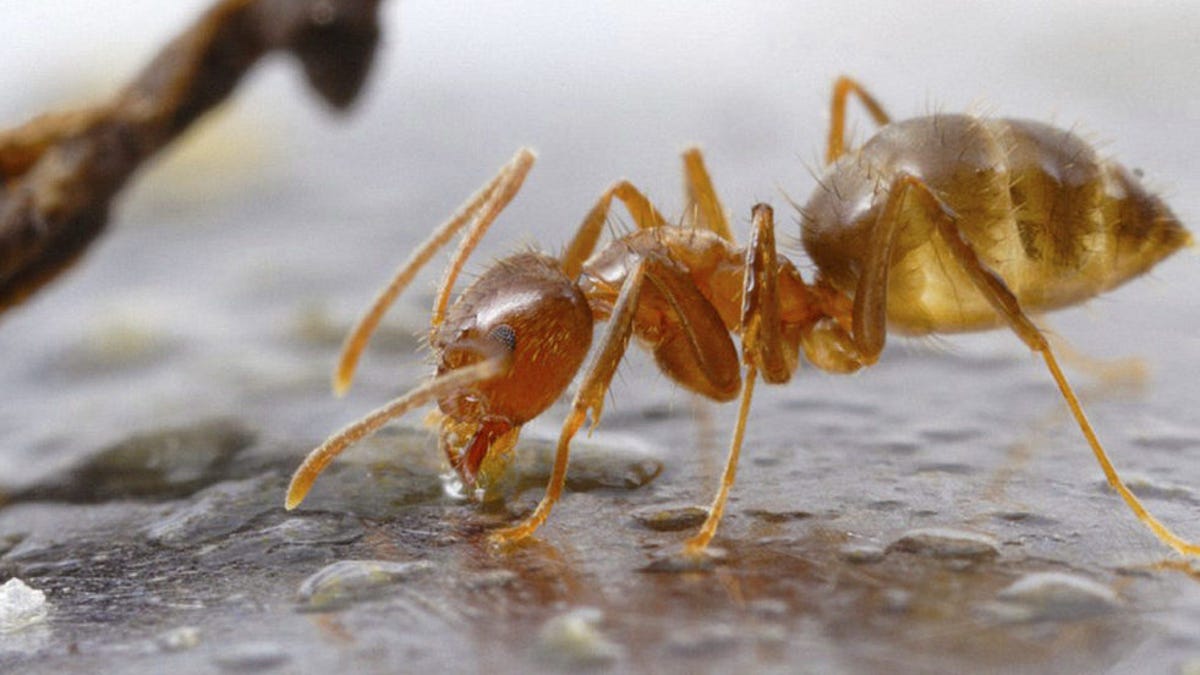Acid-Spewing Crazy Ants Invading the US May Have Met Their Match
A natural fungal pathogen could help the US fight back against invasive ants that act like an "ecological wrecking ball."
Here's another one for the "nature is metal" file. Tawny crazy ants -- invasive, acid-spewing insects from South America -- have spread across the southeastern US over the last couple of decades. They've caused damage to homes, pushed out native species and even blinded baby bunnies. There's a new hope in the fight against crazy ants: a fungal pathogen.
A team led by researchers at the University of Texas at Austin published a study on a natural fungus in the journal Proceedings of the National Academy of Science on Monday. The scientists first discovered the pathogen in crazy ants in Florida when they found spores inside the swollen abdomens of some of the insects. The fungus appears to shorten the lives of worker ants.
The fungus, which seems to only impact crazy ants, can lead to the collapse of colonies. "This doesn't mean crazy ants will disappear," said lead author Edward LeBrun, a specialist in invasive species, in a UT Austin statement. "It's impossible to predict how long it will take for the lightning bolt to strike and the pathogen to infect any one crazy ant population. But it's a big relief because it means these populations appear to have a lifespan."
Crazy ants are so tough, they displace fire ants by neutralizing fire-ant venom. UT Austin described the species as acting like "an ecological wrecking ball." They're pretty much supervillains in the places they invade. A New York Times piece in 2013 revealed how much damage they'd caused to houses in Texas -- they love electrical equipment -- and suggested they were driving people to divorce. And yes, they can bite people, but don't sting.
The researchers tested out the pathogen as a control method in the Estero Llano Grande State Park in Weslaco, Texas, in 2016. LeBrun said the park's infestation was "apocalyptic" with "rivers of ants." The university described the carnage as the ants drove out insects, scorpions, snakes, lizards and birds, and blinded baby rabbits with acid.
The scientists introduced infected ants to nesting sites in the Texas park and used hot dogs as a lure to get the populations to mingle. It worked. The fungus spread and wiped out the ants, making the park safe for native species to return.
The team intends to continue testing the pathogen at other sites in Texas to see if it will have similar results. It could be bad news for the crazy ants, but good news for people and animals affected by the scourge.


